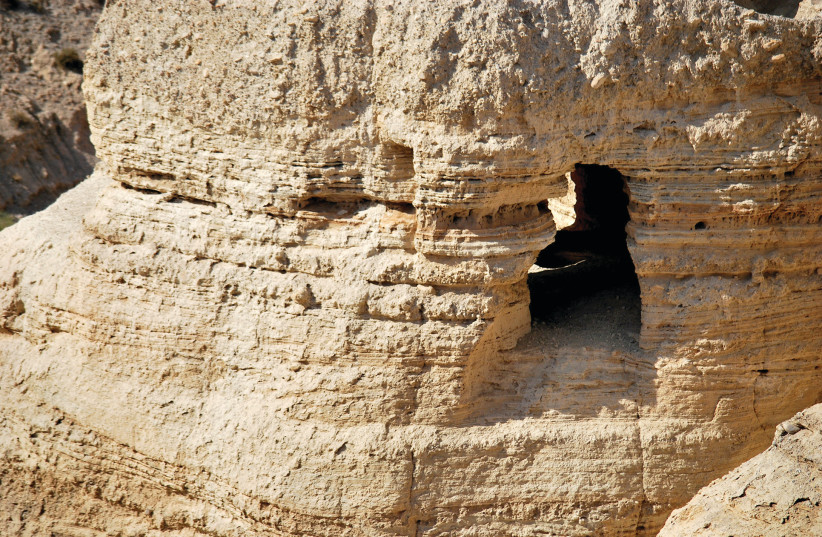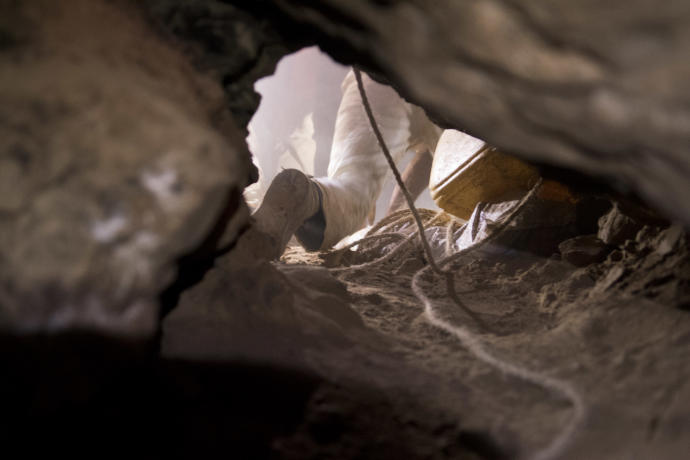 Cairo Genizah paper may hold key to secrets of Qumran, Dead Sea Scrolls
Cairo Genizah paper may hold key to secrets of Qumran, Dead Sea Scrolls
ROSSELLA TERCATIN
An ancient religious ceremony, described in several Dead Sea Scrolls, could explain the mysteries of the archaeological site of Qumran.
.

A mystical religious ceremony described in several Dead Sea Scrolls and in a medieval document from the Cairo Genizah holds the key to understanding the mysteries of the archaeological site of Qumran, new research suggests.
The nature and distinctive characteristics of Qumran, the nearest site to the caves where the legendary 2,000-year-old documents were found, have been debated by scholars for decades. It was thought to be a settlement where the Jewish sect of the Essenes lived; some proposed that its residents were not Essenes but a different community; others said it was wrong to attribute the area to a specific group; while according to some experts, Qumran might have been a fortress.
No matter the interpretation, some puzzling elements remain, according to Dr. Daniel Vainstub of Ben-Gurion University of the Negev, who authored a study recently published in the peer-reviewed, open-access academic journal Religions.
Why have archaeologists only found remains of public buildings and not of private dwellings? How is it possible to explain the presence of thousands of pottery vessels in a place that had a few dozen residents at most? And why did the area feature such a multiplicity of mikvaot ritual baths, including very large ones, for such a small population?
According to Vainstub, Qumran was intimately connected to the Essenes, but rather than a permanent settlement of the group, it was the site where all its members and candidates would flock from communities all over the country to hold their annual celebration of the “passing of the covenant.”
“I looked both at the texts and the archaeological remains, and what I have seen perfectly fits this possibility,” Vainstub said.
The ceremony was modeled after one described in Deuteronomy, chapters 27-28. In the passage, Moses instructs the Israelites on how to proclaim God’s blessings and curses on Mount Ebal and Mount Gerizim after they enter the land, which is subsequently described in the Book of Joshua.
The rules of the Essenes’ version are described in the so-called “Community Rule” manuscripts, as well as in the Damascus Document copied around the year 1,000 CE and retrieved in the Genizah.
However, Vainstub wrote in the paper, “the description of the ceremony in the Damascus Document includes a sentence containing two pieces of information that are of critical importance for our purposes and are missing in the Community Rule: ‘And all [the inhabitants] of the camps shall assemble in the third month and curse anyone who deviates either to the right [or to the left from the] Torah.’”
From that sentence, the scholar pointed out that two elements can be deduced: that the gathering took place in a specific time – the month of Sivan, when the festival of Shavuot falls – and that people from different places (camps) were called to convene in one site.

Therefore, according to Vainstub, the rules that were previously thought to apply to Essenes’ general lifestyle describe the specific ceremony instead.
“It could be that Qumran was even built for the purpose of this gathering,” he wrote.
Those who convened ahead of Shavuot did not need to be housed in buildings, but rather slept outside or in one of the numerous caves of the areas, where millennia later the manuscripts that came to be known as the Dead Sea Scrolls would be found.
“My theory is also consistent with the fact that the scrolls did not necessarily originate from Qumran, but rather were brought to the caves from all over the country and were left in the caves over the decades,” Vainstub wrote.
The archaeological remains in Qumran, including the number and size of mikvaot, assembly hall and pantry (with thousands of stored vessels), as well as the empty southern esplanade, can also be explained from this perspective, he said.
“Some dozens of permanent residents of Qumran, perhaps with the help of small Essene groups living nearby close to the springs on the shores of the Dead Sea, had to host many hundreds of people at the site once a year in ever-increasing numbers,” Vainstub concluded in the paper. “The site of Qumran, with its facilities, caves and surfaces, accords with the evidence for the annual gathering that emerges from the scrolls. No other known site is suitable for such a purpose.”
Zawartość publikowanych artykułów i materiałów nie reprezentuje poglądów ani opinii Reunion’68,
ani też webmastera Blogu Reunion’68, chyba ze jest to wyraźnie zaznaczone.
Twoje uwagi, linki, własne artykuły lub wiadomości prześlij na adres:
webmaster@reunion68.com
